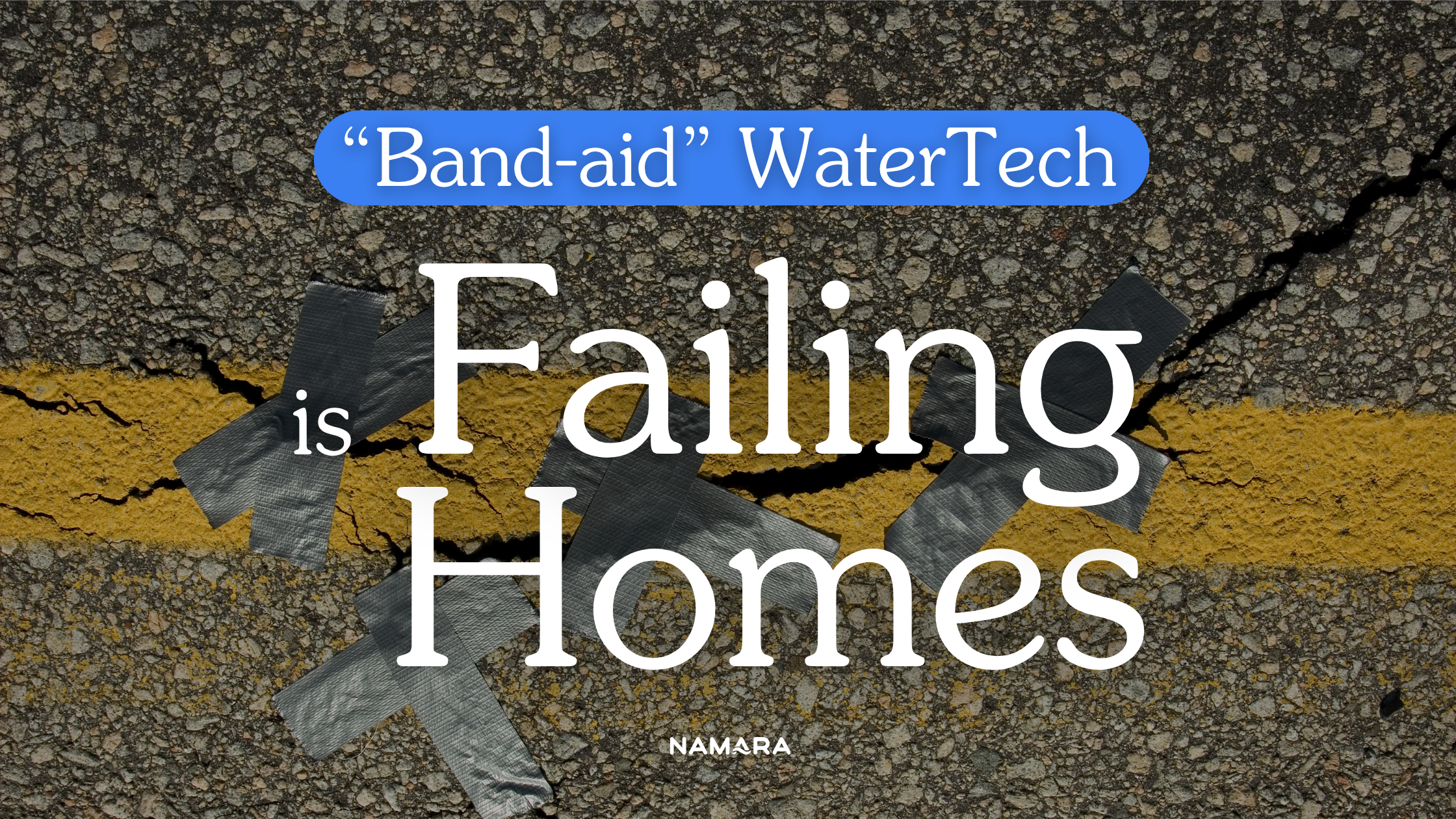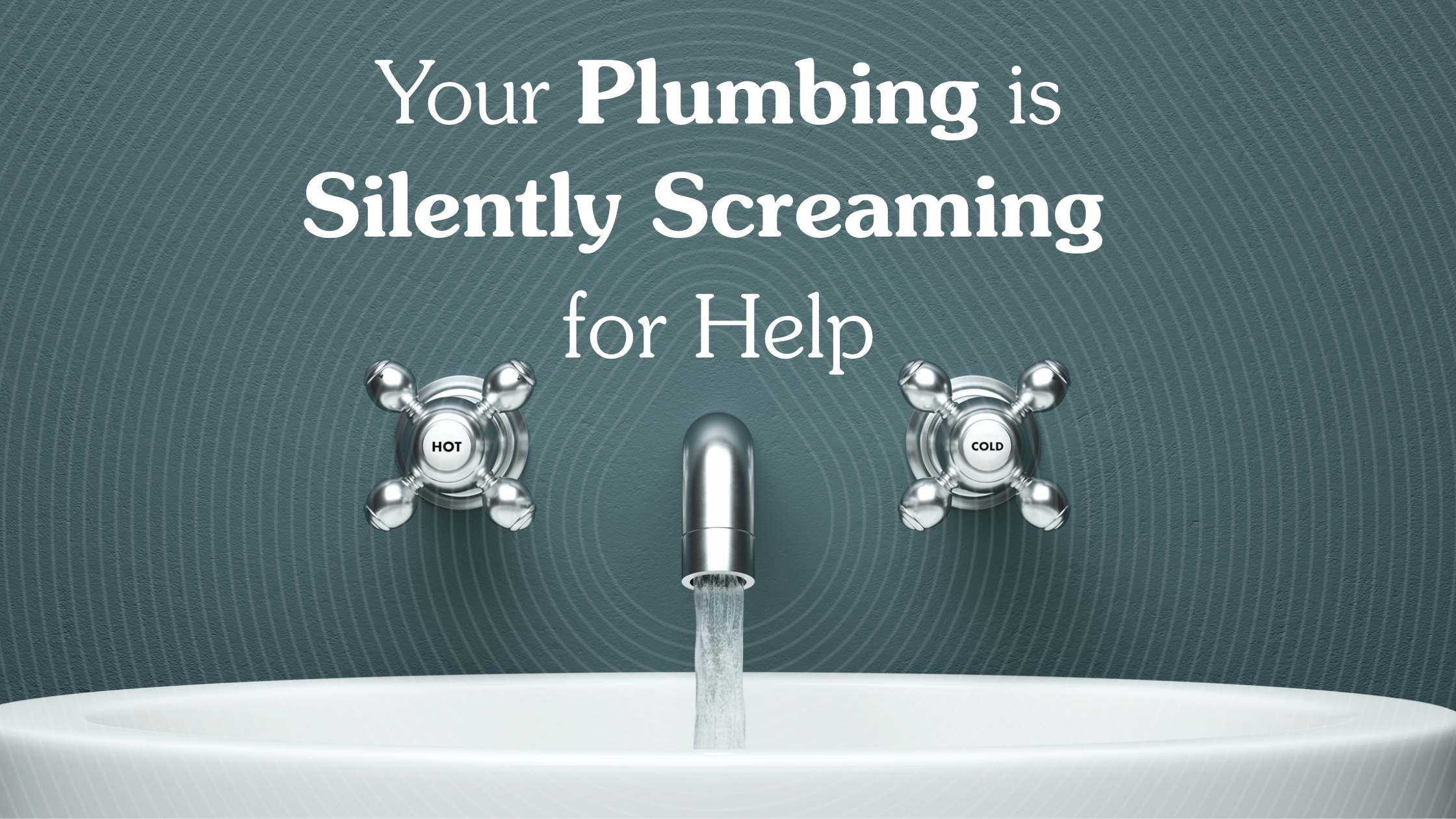A call for systemic reform in how we approach residential water infrastructure
The residential water management industry has a dirty secret: we’ve been systematically failing American homeowners for decades, and we know it.
While we’ve congratulated ourselves on incremental improvements—smarter leak detectors, better sensors, faster shutoff valves—we’ve ignored the fundamental infrastructure crisis creating the very problems we claim to solve. We’ve built an entire industry around treating symptoms while the disease spreads unchecked.
It’s time for uncomfortable honesty about our collective failure and a roadmap toward systemic solutions.
Industry Leaders Won’t Name the Real Problem
Every industry has its “wicked problems”—complex, interconnected challenges that resist simple solutions. In residential water management, our wicked problem has a name: unregulated pressure dynamics.
But we don’t talk about it. Instead, we talk about leak detection, smart shutoffs, and monitoring systems. We’ve created a $16.6 billion market focused on watching problems happen rather than preventing them.
Consider the absurdity: We’ve designed an entire ecosystem of products to detect and respond to water damage while systematically ignoring the pressure dynamics that cause 93% of that damage in the first place.
The scope of our blindness is staggering. Homes face pressure attacks from three distinct vectors—external municipal surges, environmental temperature shifts, and internal thermal expansion—yet we’ve built an entire industry that ignores two of these completely and handles the third poorly.
This isn’t ignorance. This is willful blindness.
Why We Chose to Stop Accepting “Unavoidable” Water Damage
Three years ago, my co-founder Shawn Bonneau and I stood in a flooded home, watching another family deal with “unavoidable” water damage. Shawn, with 30 years in construction, and me with 20+ years in tech, looked at each other and said aloud what we were both thinking: “This is completely preventable. Why is everyone acting like it isn’t?”
That moment crystallized our frustration with an industry that had become comfortable with failure. When we saw that companies were content giving half-solutions that addressed maybe one pressure vector poorly while ignoring the other two entirely, we asked a different question: What if we actually owned this problem completely? What if we built something excellent that prevented these problems entirely?
We saw an industry that had passively accepted that water pressure regulation hasn’t evolved in 70 years, where “solutions” only detect problems after damage starts. We said, “That’s unacceptable”—and built something fundamentally different.
This wasn’t naive optimism. This was informed rage. After my time at Citrix, VMware, Tanium, StackRox, and advising early stage startups and Shawn’s work in aerospace solutions at SpaceX and residential systems for Pulte Homes, we’d seen what happens when industries get comfortable with mediocrity—and what was possible when people pushed harder.
We know that shortcuts always cost more in the end—so we took the long, hard path to figure out how to solve these problems at the core.
The Industry Built Solutions That Watch Homes Get Destroyed
Let’s be honest about what our industry has delivered:
Leak Detection Systems: Sophisticated sensors that alert you after damage begins. They’re the smoke detectors of water management—useful for limiting catastrophe, but useless for prevention. They completely ignore external municipal surges, environmental pressure shifts, and can only detect internal pressure problems after they’ve already caused leaks.
Smart Shutoff Valves: Engineering marvels (antiquated ball valve designs) that stop water flow after problems are detected. Again, reactive rather than preventive. By the time they activate, all three pressure vectors have already done their damage.
Pressure Reducing Valves: 1950s technology with a 99% installation failure rate and an inability to handle thermal expansion events. At best, they address static external pressure while completely failing against environmental and internal pressure dynamics.
Expansion Tanks: Static solutions for dynamic problems that fail when waterlogged—which happens more frequently than manufacturers admit. They’re designed for internal thermal expansion but can’t handle external municipal surges or environmental pressure variations.
Put differently, this industry has squandered their innovation firepower and spent billions to perfect the ways we can watch homes get damaged—instead of investing in designing systems that can handle all three vectors of pressure attack simultaneously.
Every Home Is Under Pressure-Attack 100+ Times Daily From Three Directions
Here’s what we know, but refuse to address with current products:
Homes face a triple threat of pressure attacks that no existing solution can handle comprehensively.
External pressure events hit homes from municipal supply fluctuations and failed pressure regulators. When water utilities experience demand surges or equipment failures, homes can see shocking spikes reaching 150-200+ PSI—far beyond the 40-65 PSI that residential plumbing systems are designed to handle. This isn’t theoretical: field data from plumbing professionals consistently documents these extreme municipal pressure variations.
Environmental pressure events create additional systematic stress through freezing temperatures, seasonal pressure shifts, and rapid weather changes. These environmental factors compound pressure problems year-round, yet conventional solutions completely ignore their impact on system integrity.
Internal pressure events occur 50-100+ times daily as water heaters expand, fixtures cycle on and off, and appliances start and stop. Each thermal expansion event and appliance demand creates pressure waves that travel through a home’s entire plumbing infrastructure, stressing every connection, joint, and component in the system.
Current protection systems fail against all three attack vectors. Pressure reducing valves can’t handle thermal expansion because they act as check valves, trapping expanded water with nowhere to go. Basic leak detectors ignore pressure entirely. Smart shutoffs only respond after damage begins.
The result? A preventable systematic destruction of residential water infrastructure from multiple pressure sources that we’ve trained ourselves to see as “normal wear and tear.”
The Hidden Tax Bankrupting American Families
Our industry’s reactive approach has created a massive hidden tax on American homeowners:
- $13 billion annually in water damage claims from all three pressure vectors
- 30-50% higher utility costs from pressure-induced overconsumption across external, environmental, and internal pressure dynamics
- Premature appliance failure costing thousands per household as three different pressure sources destroy components
- Warranty voiding when manufacturers discover pressure-related damage from any of the three vectors
We’ve created a system where homeowners unknowingly operate appliances under attack from three pressure sources, void their warranties, and then blame the manufacturers when predictable failures occur.
This isn’t market dynamics. This is market failure.
Why We Keep Choosing Easy Over Effective
The uncomfortable question: If we know that homes face three distinct pressure threats, why do we keep building detection systems that ignore two of them completely and handle the third poorly?
Because addressing one pressure vector is easier to engineer, easier to install, and easier to sell than comprehensive three-vector protection.
Dynamic pressure regulation across all three vectors requires:
- Complex engineering to handle external municipal variations, environmental temperature impacts, and internal thermal dynamics simultaneously
- Professional installation and calibration for comprehensive protection
- Integration with existing infrastructure across all pressure sources
- Ongoing monitoring and adjustment for all three threat vectors
The industry has chosen marketing simplicity over engineering effectiveness, and American homeowners are paying the price through preventable damage from the two pressure vectors we’ve systematically ignored.
What Happens When You Refuse to Take Shortcuts
This approach has defined everything we’ve built at Namara. We don’t take shortcuts when we know they cost more in the end. We don’t make excuses when we know excuses only hold things back.
For nearly three years, we’ve collaborated closely with homeowners and plumbers, learning why homes experience pressure attacks from all three vectors simultaneously—external municipal surges reaching 116 PSI, environmental freeze-thaw cycles, and internal thermal expansion events. We’ve worked across home types—from new suburban builds to decades-old properties with complex, aging plumbing infrastructures—learning what real families actually need versus what the industry thinks they want.
Our lean startup discipline approach has forced us to be brutally honest about what works and what doesn’t. We’ve verified 20% immediate water savings plus 10-12% through leak detection—not through projections, but through months of real-world measurement in actual homes protected against all three pressure vectors.
The validation for what we’ve developed is real and meaningful— a 2,000 unit customer agreement with global plumbing manufacturer IPS Corporation, partnerships with corporate water stewardship programs, and ongoing interest from some of the biggest commercial names in water. These companies recognize that their current solution portfolios can’t solve the systemic three-vector pressure problems their customers face daily.
Water industry veteran Will Sarni captured why our approach works: “The team at Namara isn’t from the world of water, and I view that as an advantage. Outsiders often see what the rest of us have been staring at for years without really seeing.”
He called us “unreasonable people”—the kind who challenge entrenched thinking and dare to reimagine the status quo. That’s exactly what we’re doing — and what we’re up against.
But we didn’t just see the three-vector problem in a new way—we chose to own it. Now it’s time for the rest of the water industry to own it, too.
Insurance Companies Are Subsidizing the Wrong Solutions
Insurance providers compound the problem by incentivizing the wrong solutions. Offering 5-20% discounts for leak detection systems while ignoring comprehensive pressure management that addresses external, environmental, and internal pressure threats is like rewarding homeowners for installing smoke detectors while ignoring electrical code violations.
The actuarial math is backwards: We’re subsidizing reactive systems that limit damage after it occurs from one pressure vector while ignoring preventive systems that could eliminate 93% of claims from all three vectors entirely.
This creates a vicious cycle: Insurance companies pay billions in preventable claims from external municipal surges, environmental temperature shifts, and internal thermal expansion, pass costs to consumers through higher premiums, then offer minimal discounts for solutions that don’t address any of these root causes.
Builders Are Installing Systems Designed to Self-Destruct
The construction industry perpetuates this dysfunction by installing tens of thousands of dollars worth of pressure-sensitive appliances and fixtures—then connecting them to unregulated pressure systems guaranteed to destroy them prematurely through external, environmental, and internal pressure attacks.
We’ve normalized a building practice that’s essentially planned obsolescence for every water-connected component in the home, exposed to three different types of pressure damage simultaneously.
Building codes requiring pressure reducing valves above 80 PSI represent progress, but they address only static external pressure, not the dynamic external surges, environmental variations, or internal pressure events that cause most failures.
We’re building homes with fundamental infrastructure contradictions that expose every component to three vectors of pressure attack, then acting surprised when they fail predictably.
Four Solutions That Actually Address Root Causes
It’s time to abandon incremental improvements and reimagine modern home water systems as they should be.
Here’s what actual solutions look like:
1. Replace Static Regulation with Dynamic Control
Moving from static regulation to active pressure control that maintains optimal ranges regardless of external municipal supply variations, environmental temperature impacts, or internal thermal expansion events. This isn’t monitoring—it’s prevention across all three pressure vectors.
2. Design Systems, Not Components
Treating water pressure as a whole-home infrastructure system rather than a collection of disconnected components that can’t handle the three-vector pressure reality. Every fixture, appliance, and connection must operate within designed parameters regardless of pressure source.
3. Predict Problems Before They Become Damage
Using continuous monitoring to predict component stress from all three pressure vectors before failure occurs. Not “smart leak detection” but intelligent infrastructure management that identifies problems from external, environmental, and internal pressure sources before they manifest as damage.
4. Align Standards with Reality
Establishing pressure management standards that acknowledge the three-vector pressure reality and align with appliance manufacturer specifications rather than municipal convenience.
Stop Subsidizing Failure. Start Preventing It.
This isn’t a technology problem. This is a systems thinking problem that requires industry-wide acknowledgment of our collective failure to address the three-vector pressure reality.
To Insurance Providers: Stop subsidizing ineffective solutions that ignore two-thirds of the pressure problem. Comprehensive pressure management systems that prevent 93% of claims from all three pressure vectors deserve greater incentives than detection systems that limit damage after it occurs. Reform your actuarial models to reflect three-vector prevention value.
To Builders and Contractors: Stop installing expensive appliances on infrastructure designed to be attacked by three different pressure sources. Integrate dynamic pressure management as standard practice, not an afterthought. Your professional reputation depends on building homes that don’t self-destruct under predictable pressure attacks.
To Policymakers: Update building codes to require comprehensive pressure management across all three vectors, not just static pressure reduction. Single-vector solutions for three-vector problems aren’t solutions—they’re compliance theater.
To Technology Providers: Stop engineering around the edges of one pressure vector while ignoring the other two. The market needs systematic infrastructure solutions that address external, environmental, and internal pressure threats simultaneously.
We Can Keep Watching Homes Get Damaged, Or We Can Finally Fix This
Real progress requires admitting that our current approach has failed systematically by ignoring two-thirds of the pressure problem. We’ve built an industry around managing failure rather than preventing it, and that philosophical error has cost American families billions in preventable damage from three known pressure sources.
The technology exists to solve these problems comprehensively across all three pressure vectors. What’s missing is industry leadership willing to acknowledge that single-vector improvements to three-vector problems aren’t progress—they’re procrastination.
To all of us in water — a choice is before us, but the consequences belong to the people we serve.
It’s time to stop being the water damage industry and being the water infrastructure industry.
At Namara, we’ve made our choice. Will you join us?
This analysis only scratches the surface of how upstream thinking can transform our approach to residential water infrastructure. Stay tuned for the release of latest full white paper, “The Unregulated Water Pressure Crisis: A Systems Analysis of Hidden Infrastructure Failures in Residential Properties” which shares the technical framework, economic modeling, and systematic solutions roadmap behind this post.
___________
About Namara
Namara’s patented smart water management system actively protects, optimizes, and extends the life of residential plumbing systems by preventing excessive water pressure that causes damage and overuse, instead of just detecting problems after they’ve already cost you money or ruined your home. Without having to sacrifice your shower experience or change your lifestyle, Namara ensures pressure always stays in the safe range, delivering 20-30% water savings on every bill while protecting you from becoming one of the 14,000 homeowners who file water damage claims every day.
Learn more at NamaraWater.ai



